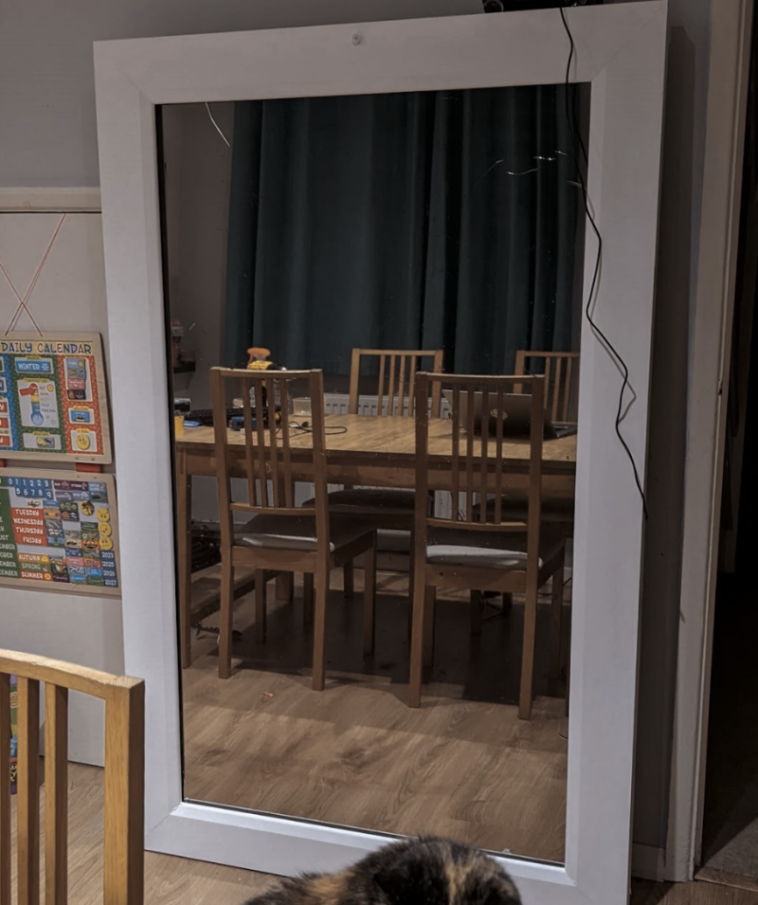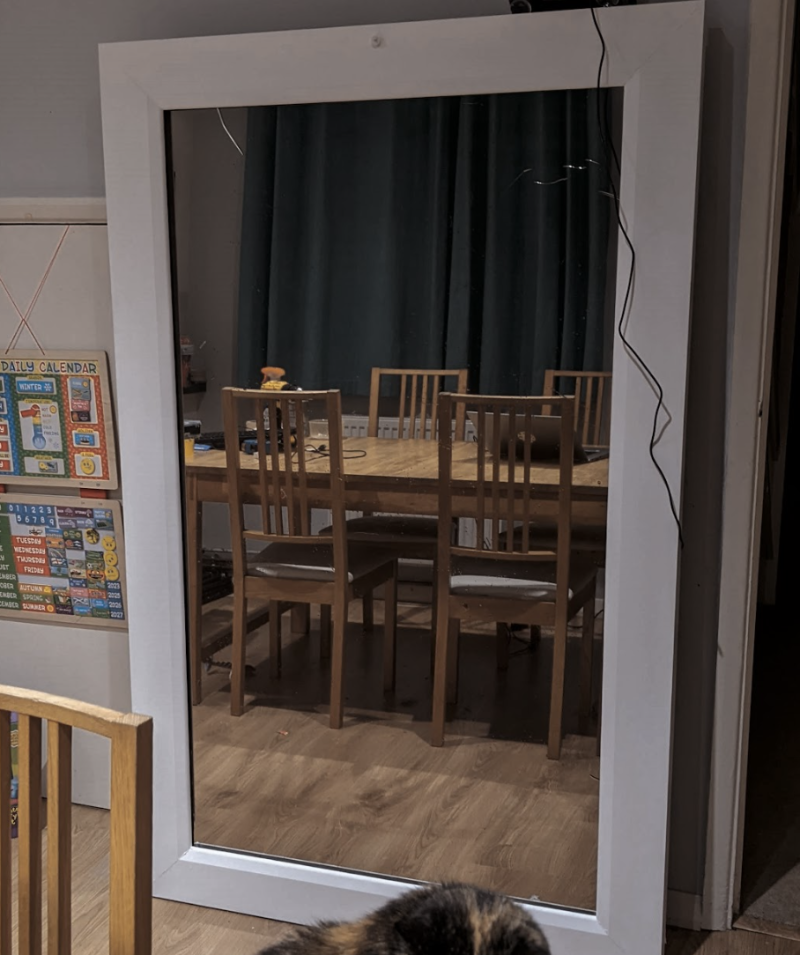With that in mind, he went big. And we mean really big. He took a 65-inch touchscreen and connected it to a Raspberry Pi 5 computer, figuring games would look amazing across such a large display. It also enabled David to create a full-length mirror, despite it posing issues of its own.
“Working with such a large display was a challenge due to the physical weight of moving and manipulating it,” he explains. “I think it weighed 48kg so I really shouldn’t have been lifting it on my own. I was afraid I would break it by letting it flex, cracking the screen.”
Looking good
Initially, David tested the concept using a Raspberry Pi 3 computer and an official Raspberry Pi seven-inch touchscreen. He played around with PINN, a version of the NOOBS operating system installer, and sought to get everything working with RetroPie before ordering the larger equipment.
“Unfortunately, the curse of the early adopter struck, with RetroPie and PINN not having official support for Raspberry Pi 5 at the time,” David says. “It took some time to get PINN working at all and, even then, I think Raspberry Pi 5 support was questionable.” David switched to Recalbox which was installed on one partition. Another partition was used for the magic mirror functions.
“I wanted the mirror to play as many gaming platforms as possible,” David says. “To achieve this I figured I needed the most processing power, and the Raspberry Pi 5 seemed the best way to go. So far it has proved more than capable of emulating games on many platforms without much trouble.”
On reflection
David also added motion-sensing using a PIR sensor. When someone walks in front of the sensor, the screen turns on. When the person moves away, it turns off. The display also turns off at night and comes back on in the morning, using the Raspberry Pi OS’ Magic Mirror app to show the weather forecast, a calendar and more. The build also includes an RS232 converter so that the Raspberry Pi’s Universal Asynchronous Receiver/Transmitter (UART) can be converted for serial communications.
When you want to play, controllers can be connected via Bluetooth Low-Energy or USB, and the games look a treat on such a large screen. There is still room for improvement, however. “I still need to get around to reapplying the mirror film again,” he says. “I’d also like to spend more time with the plugins to the magic mirror platform, maybe even develop a couple of my own to make the best use of the screen real estate available. Maybe in the future there is scope for a camera, facial recognition and a multi-user experience.”



